The LG AutoCal workflow for Calman Home provides all the tools needed to ensure color accuracy on your AutoCal capable display. It is designed so users can automatically adjust their color settings for accurate image presentation with confidence.
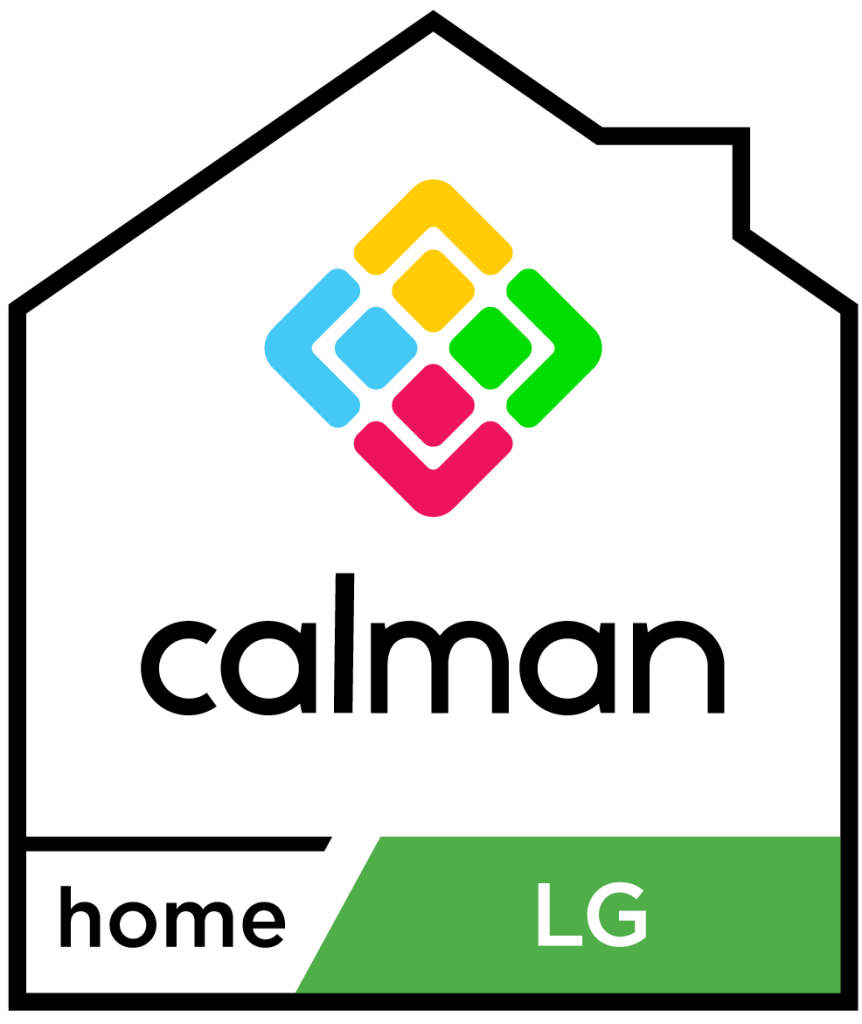
Each step of this workflow has been optimized to display relevant information, and automatically configure common settings. Both Pre-Calibration and Post-Calibration measurement steps are included for comparing pre- and post-performance.
Note: For best results, the workflow steps should be performed in order, as many steps include automation designed to be performed in order
Required Hardware
- HDR and Dolby Vision Compatible Pattern Generator
-
- For 2019-2023 models, this can be the LG Internal Pattern Generator (For more info see This Article)
- For 2018 models, a hardware pattern generator like the VideoForge Pro must be used for HDR and Dolby Vision Calibration
- HDR Compatible Meter
- For information see Calman Compatible Meters
- Calman Compatible LG TV
-
|
Year |
Processor |
OLED Models |
LCD Models |
|
2025 |
Alpha 7 |
– |
QNED80, QNED82, QNED82A, NANO80, NANO90,UA77A, UA75Z, UA77 |
|
|
Alpha 8 |
OLED B5, B5A |
QNED92, QNED90A, QNED90, QNED85, QNED85A, UA90, UA90A |
|
|
Alpha 9 |
OLED C5, C5A |
QNED9M |
|
|
Alpha 11 |
OLED M5, G5 |
– |
|
2024 |
Alpha 5 |
– |
QNED80, NANO80, UT90, UT80, UT73, LR60 |
|
Alpha 8 |
OLED B4 |
QNED90, QNED85, 86Nano80 |
|
|
Alpha 9 |
OLED C4 |
QNED99 |
|
|
Alpha 11 |
OLED M4, OLED G4 |
– |
|
|
2023 |
Alpha 7 G6 |
OLED: A3, B3 |
QNED80, QNED80UQA, QNED90, NANO85, NANO90, NANO91 |
|
Alpha 9 G6 |
OLED: C3, G3, M3, R3 |
QNED99, NANO99, NANO97 |
|
|
2022 |
Alpha 9 G5 |
C2, G2, M2, R2, Z2 |
QNED99, NANO99, NANO97 |
|
Alpha 7 G5 |
A2, B2 |
QNED80, QNED80UQA, QNED90, NANO85, NANO90, NANO91 |
|
|
2021 |
Alpha 9 G4 |
C1, G1, M1, R1, Z1 |
QNED99, QNED95, NANO99, NANO95 |
|
Alpha 7 G4 |
A1, B1 |
QNED90, NANO90, NANO85 |
|
|
2020 |
Alpha 9 G3 |
CX, GX, WX, ZX |
NANO99, NANO97, NANO95 |
|
Alpha 7 G3 |
BX |
NANO90, NANO85 |
|
|
2019 |
Alpha 9 G2 |
R9, Z9, W9, W9S, E9, C9 |
NanoCell SM99 |
|
Alpha 7 G2 |
B9 |
NanoCell LCD Models |
Step 1
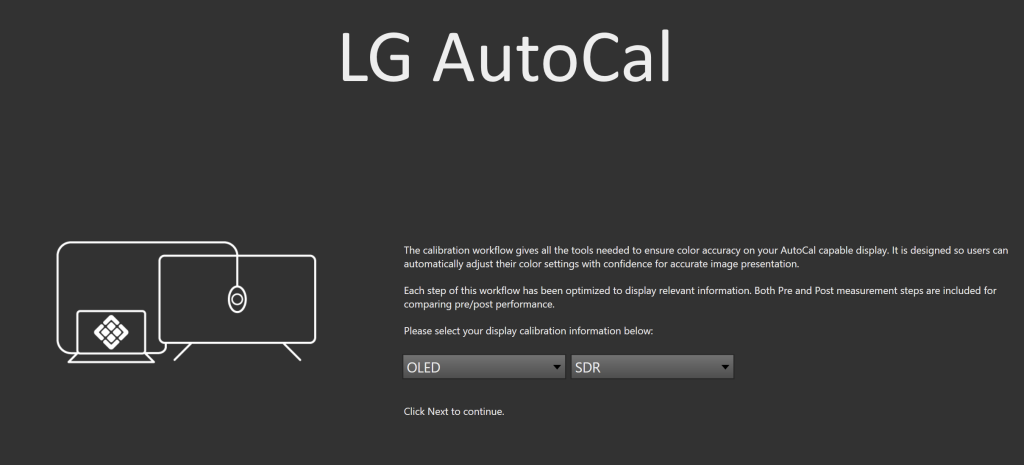
- From the Calman Menu in the top-left, choose Open Workflow Template and then LG AutoCal
- On the introduction screen, choose the Display Type (OLED/LCD/Projector) and Colorspace Target (SDR/HDR/Dolby Vision)
- This pre-configures the workflow for the desired targets.
- At the end of the selected workflow, you will have the chance to proceed to another colorspace target
Step 2
Connect your Colorimeter and Pattern Generator to Calman. And, confirm your calibration targets, which have been pre-configured based on suggested values
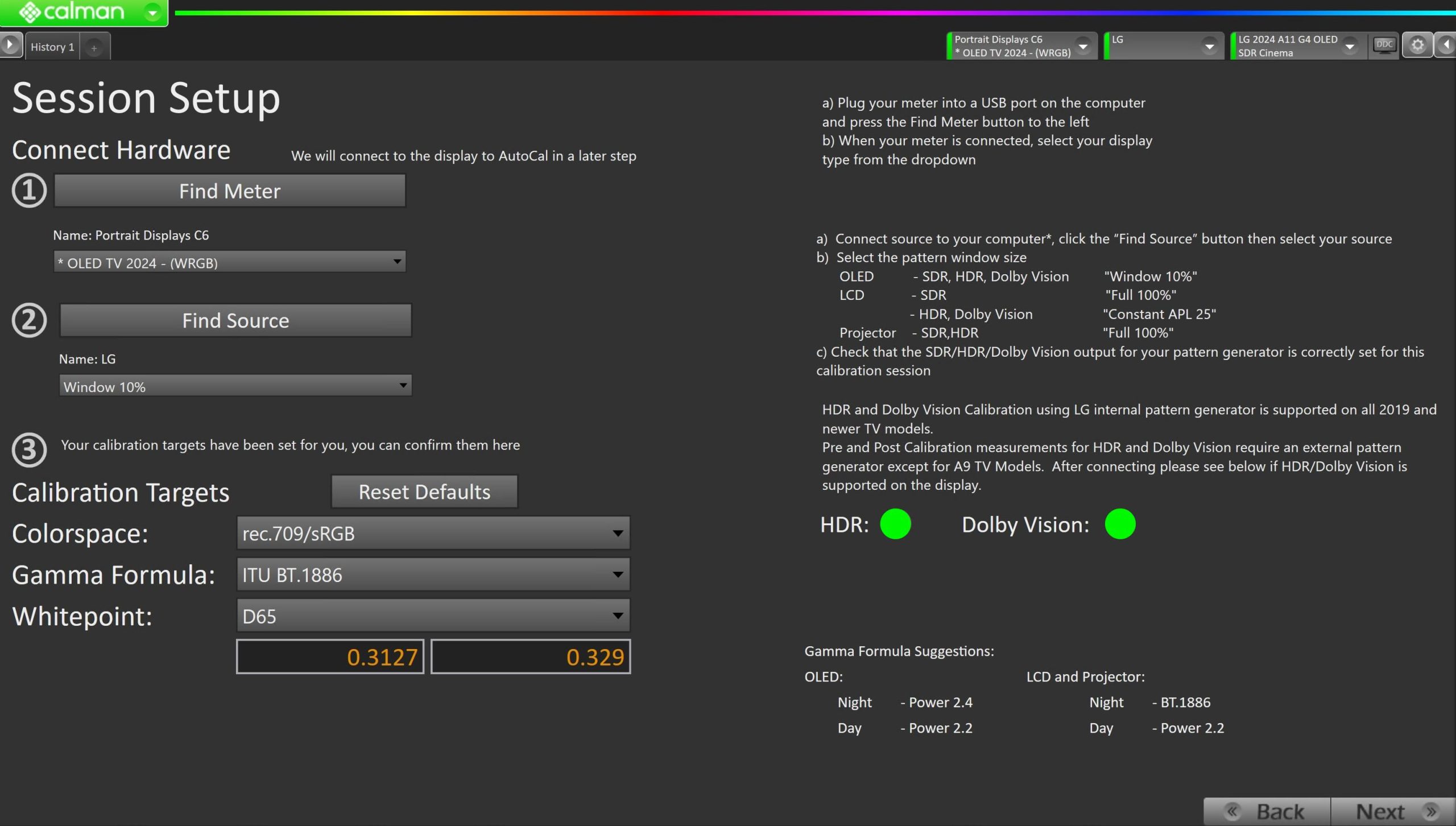
- Plug your meter into a USB port on the computer and press the Find Meter button on the left
- When your meter is connected, select your display type from the dropdown (this will vary by meter)
- OLED: White-OLED (OLED (White) LG, Panasonic, FSI 2018 for C6 Meter)
- SuperUHD LCD – LCD LED Blue-Green (2018 LG SuperUHD LCD for C6 Meter)
- When your meter is connected, select your display type from the dropdown (this will vary by meter)
- Connect Pattern Source to your computer. If you’re using the internal pattern generator, see this article for connection steps
- Click the Find Source button then select your source
- Select the pattern window size
- OLED: Window 10%
- LCD: 100% full-screen (SDR)
- Confirm your Calibration Targets
- Colorspace
- SDR: Rec.709/sRGB
- HDR: Rec.2020
- Dolby Vision: DCI P3 (note that this target will be automated for you as you follow the steps)
- Gamma
- OLED
- Night: Power 2.4
- Day: Power 2.2
- LCD
- Night: BT.1886
- Day: Power 2.2
- OLED
- Whitepoint
- D65
- Colorspace
Step 3
In this step, you’ll take readings of your display before the calibration. These will be used to compare your calibration results
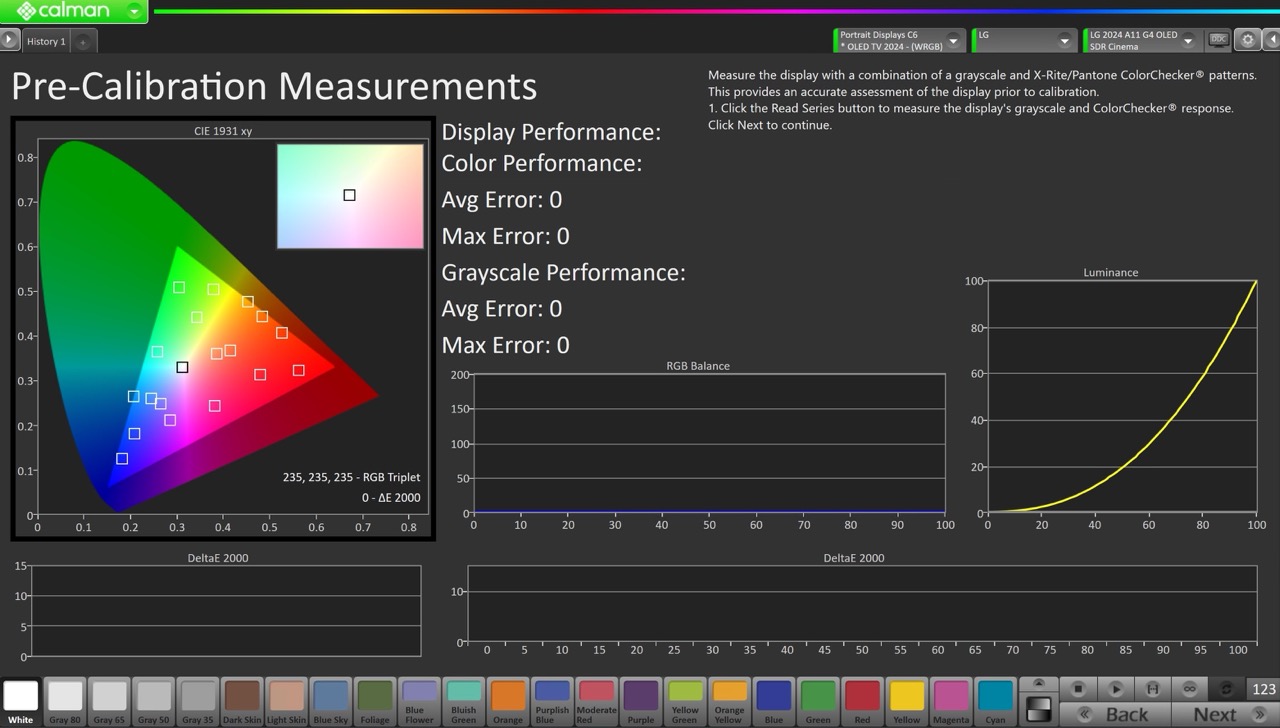
- To take Pre-Calibration Measurements click the Read Series […] button to measure the display’s grayscale and ColorChecker response
- This will provide a point of reference to compare your calibration results
Step 4
Connect to, and prepare your LG TV for calibration
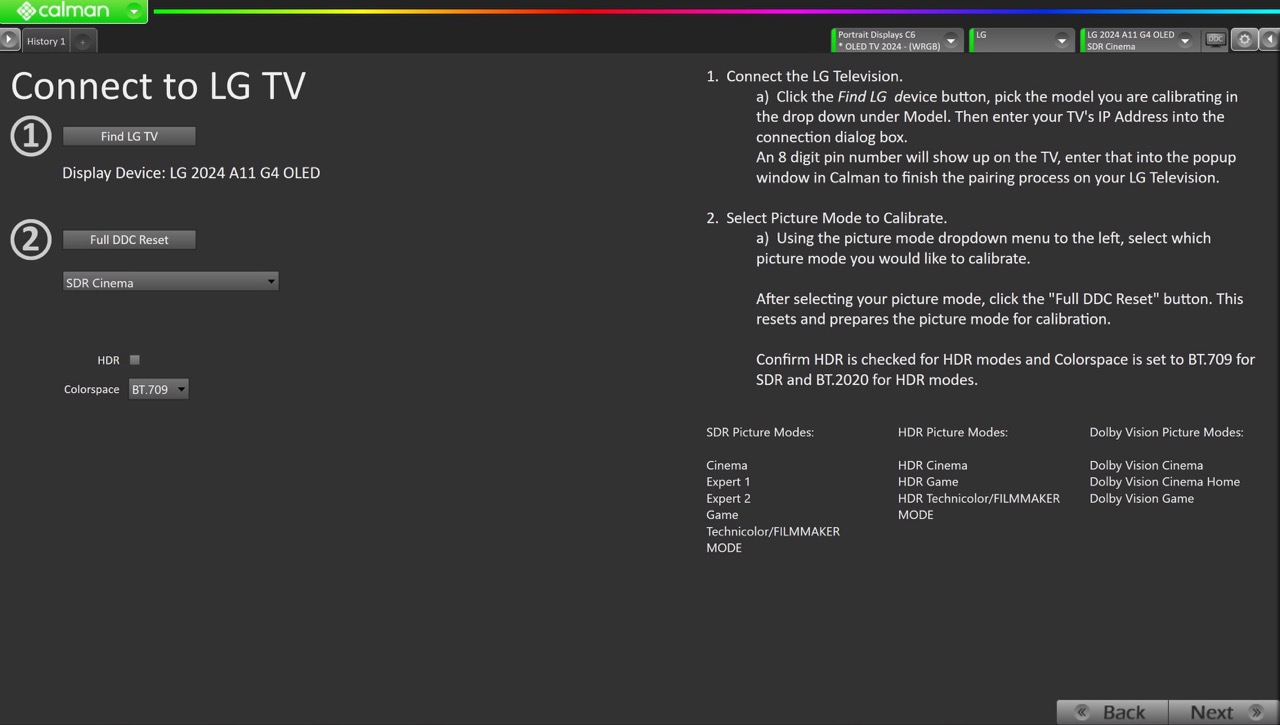
- Connect to your LG TV
- Click the Find LG TV Button
- Pick the LCD or OLED Model you are calibrating in the drop down under Model.
- Enter your TV’s IP Address into the connection dialog box, and click Connect
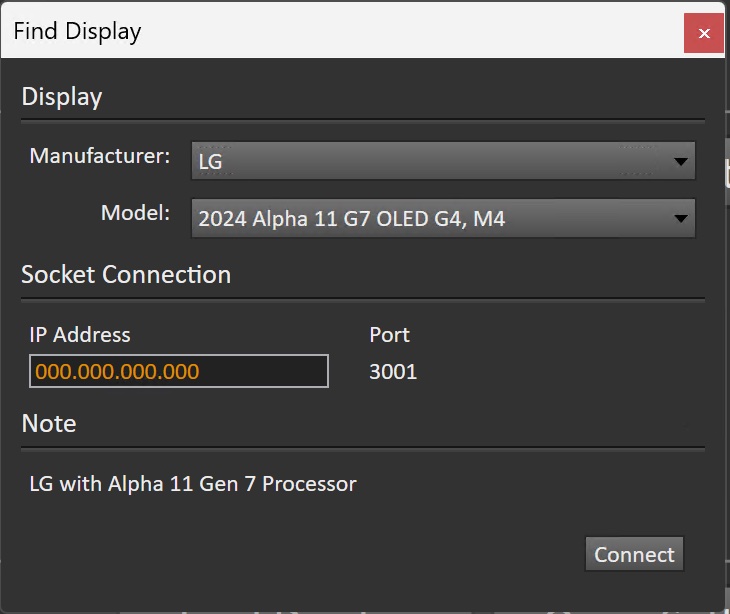
- When prompted, enter the 8 digit passcode displayed on the TV

- Select Picture Mode to Calibrate.
- Each Picture Mode is a separate memory slot for calibration data. Calibrations to one mode and colorspace do not affect the other picture modes.
- Using the picture mode dropdown menu on the left, select which picture mode you would like to calibrate.
- SDR Picture Modes:
- Cinema
- Expert 1
- Expert 2
- Game
- Technicolor (2019/2018)
- Filmmaker (2020+)
- HDR Picture Modes:
- HDR Cinema
- HDR Game
- HDR Technicolor (2019/2018)
- HDR Filmmaker (2020+)
- Dolby Vision Picture Modes: (Will vary by model)
- Dolby Vision Cinema
- Dolby Vision Cinema Home
- Dolby Vision Game
- SDR Picture Modes:
- After selecting your picture mode, click the Full DDC Reset button. This resets and prepares the picture mode for calibration.
- Confirm Colorspace and Dynamic Range are set appropriately to match your target
- SDR: BT.709, HDR UNCHECKED
- HDR/Dolby Vision: BT.2020, HDR CHECKED (note that this target will be automated for you as DCI P3 for Dolby Vision)
Step 5
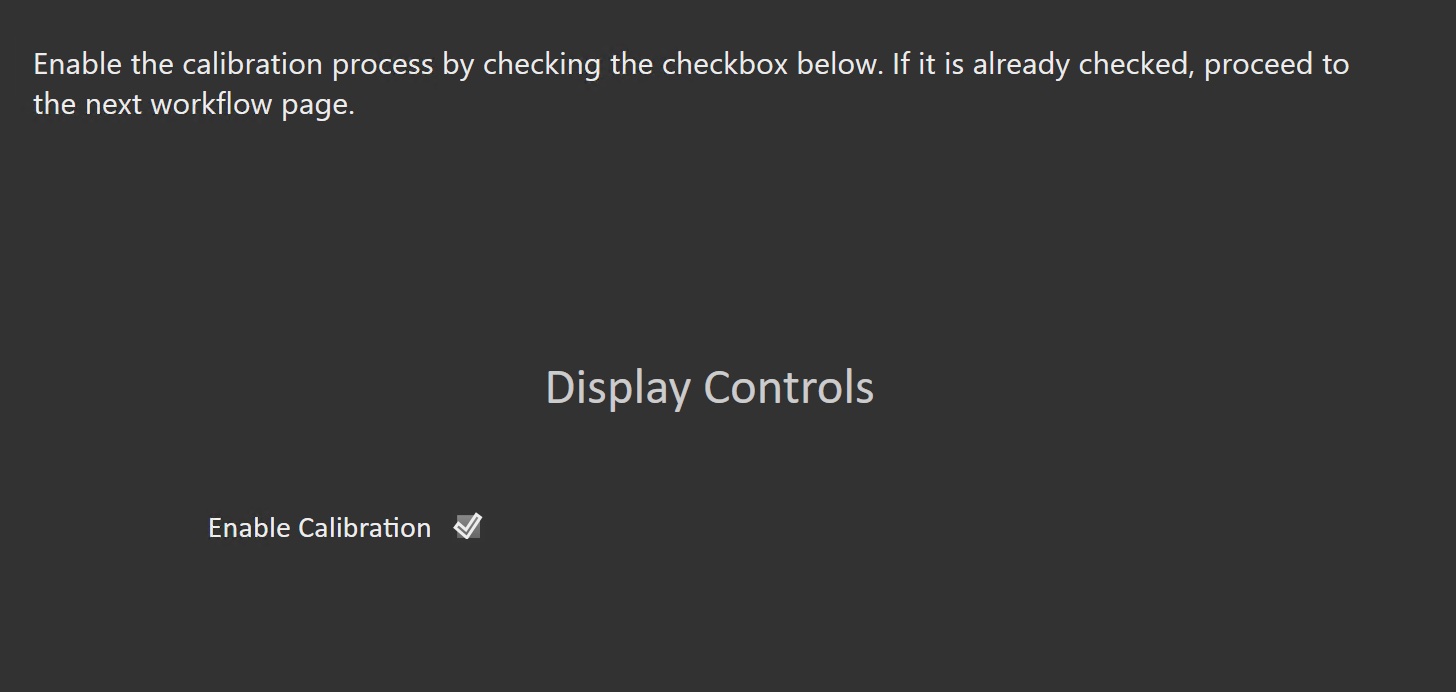
- Enable the calibration process by checking the checkbox. If it is already checked, proceed to the next workflow page.
- You will see a Calibration Start notification on the TV if this step has completed successfully
Step 6
In this step, you will be able to adjust the Luminance of your display to match your desired target. Luminance is a subjective target. SDR reference luminance is 100cd/m2, but you may need to target higher to account for the ambient light in your environment.
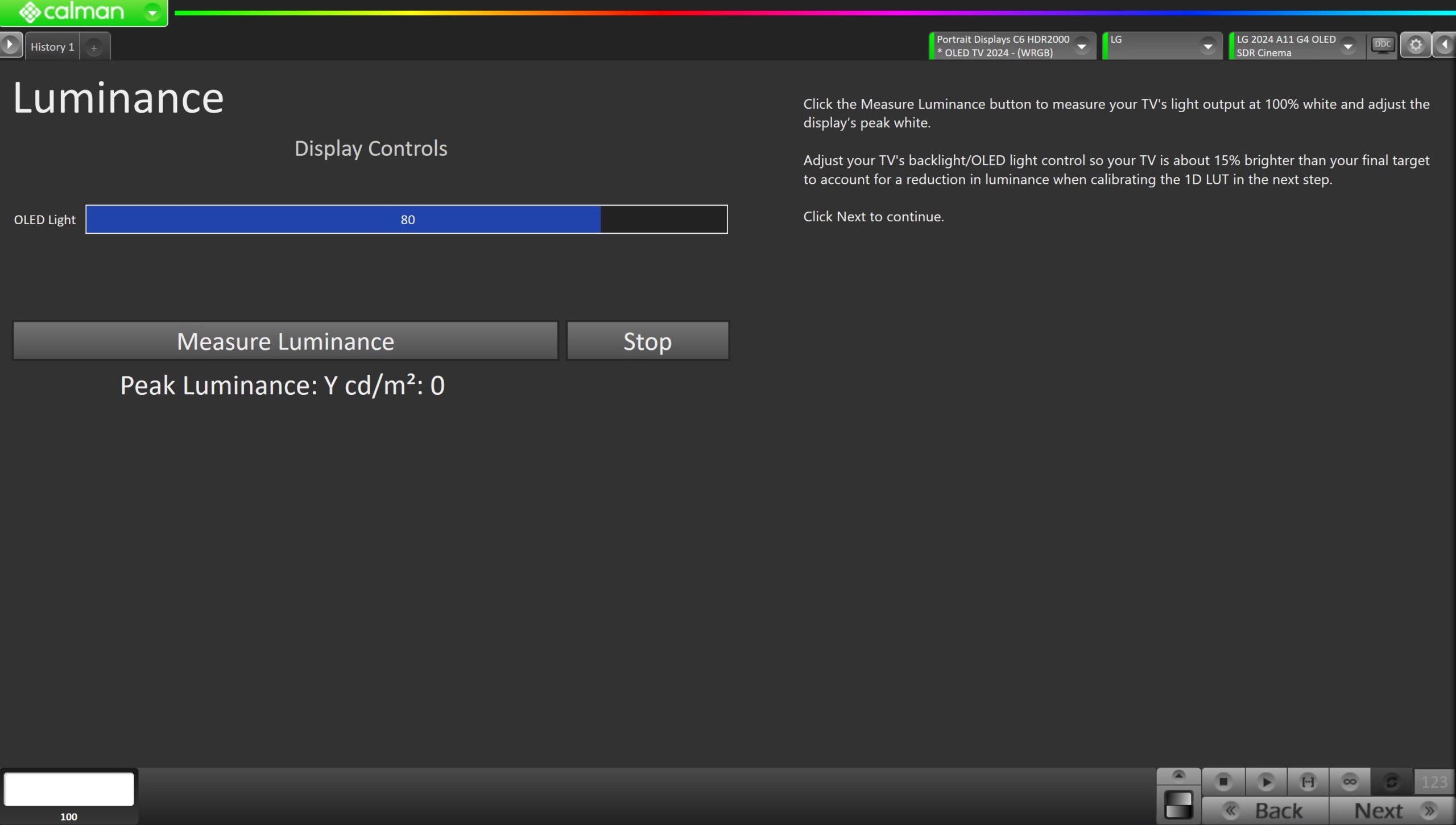
Note: This step is not present in HDR and Dolby Vision
- Click the Measure Luminance button to measure your TV’s light output at 100% white and adjust the display’s peak white to the desired luminance.
- Luminance is a subjective target. SDR reference luminance is 100nits, but you may need to target higher to account for the ambient light in your environment.
- Adjust your TV’s backlight/OLED light control so your TV is about 15% brighter than your final target to account for a reduction in luminance when calibrating the 1D LUT in the next step
- Press Stop when luminance adjustment is complete
Step 7
Here Calman will adjust the Multipoint Greyscale of your display using a 1D LUT.
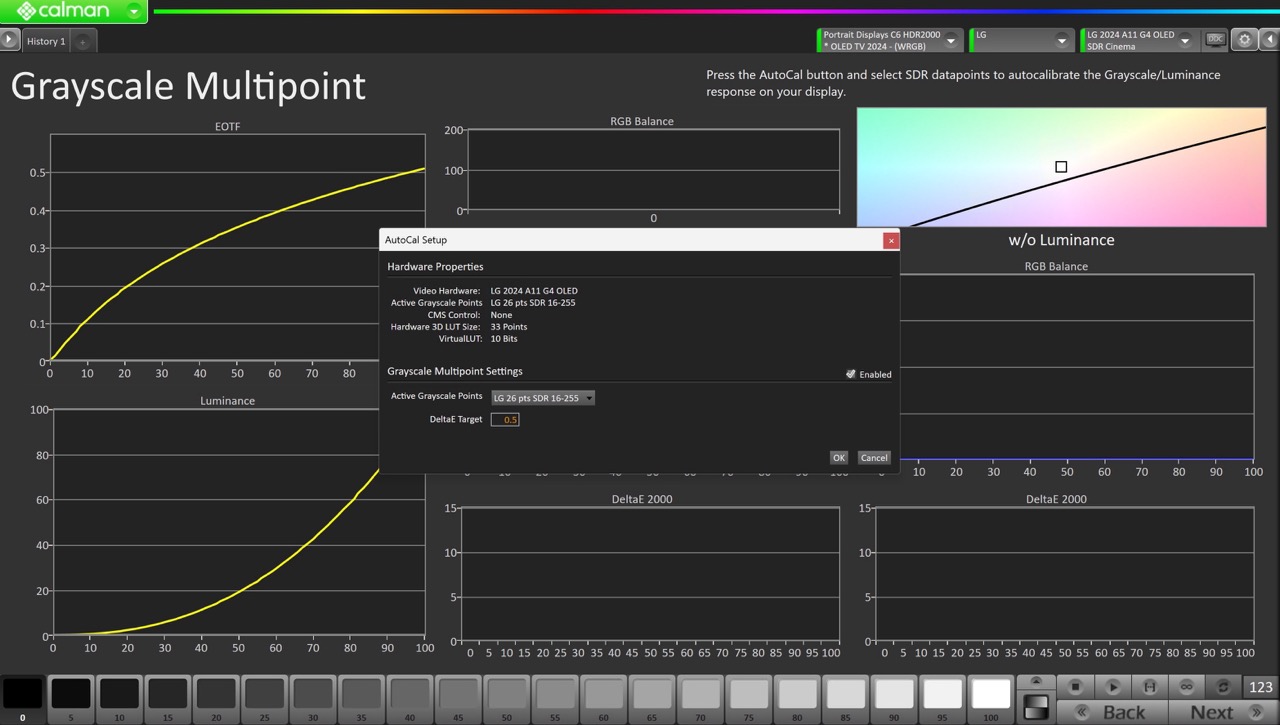
- Press the AutoCal button and select the correct data points to auto-calibrate the Grayscale/Luminance response on your display.
- SDR: There are several SDR Greyscale Point options. Choose the one that best fits your video levels. In most case 26pts SDR 16-255 is appropriate
- HDR: 20pts HDR or 42pts HDR
- Click OK to begin greyscale AutoCal
Step 8
On this page, Calman will calibrate the Color Management using a 3D LUT
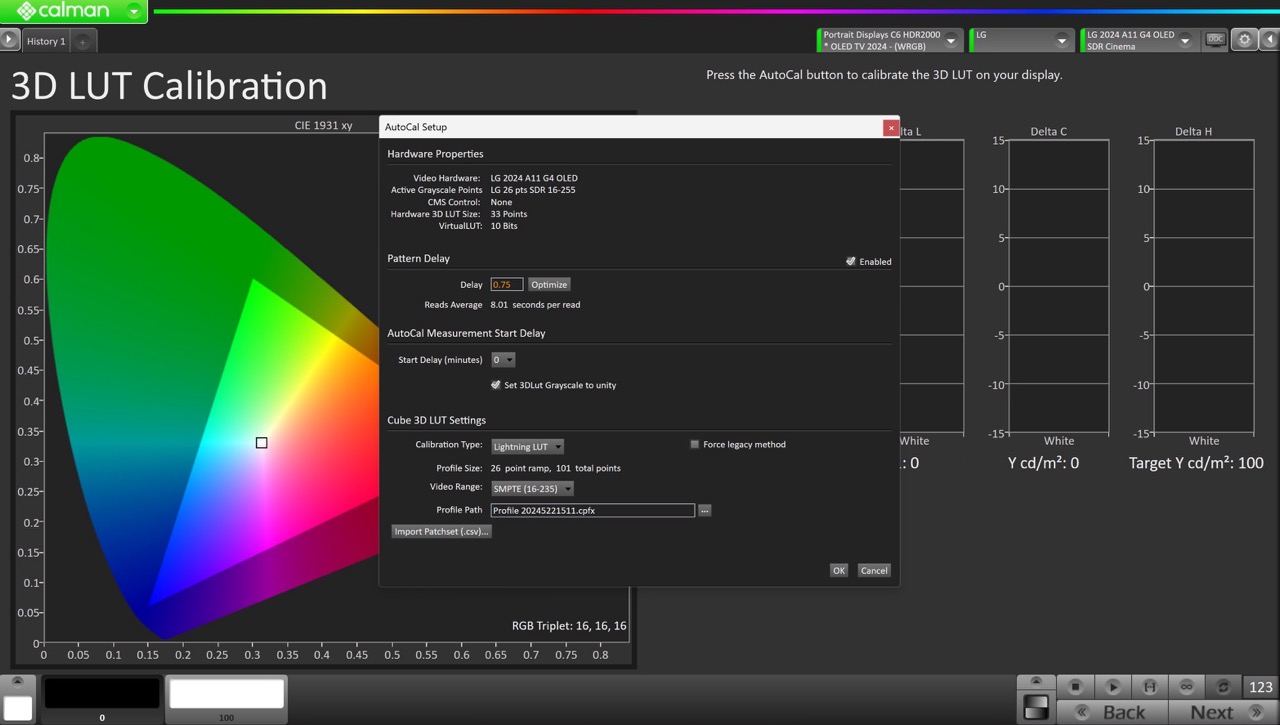
-
- Press the AutoCal button to open AutoCal dialog
-
- All options are preconfigured
- Note: Matrix LUT is the only supported method for HDR calibration
-
- Press the AutoCal button to open AutoCal dialog
-
- Click OK to begin colorspace AutoCal process
Step 9
Here you will be able to manually adjust your Brightness and Contrast to ensure the display is not clipping away any RGB values near white
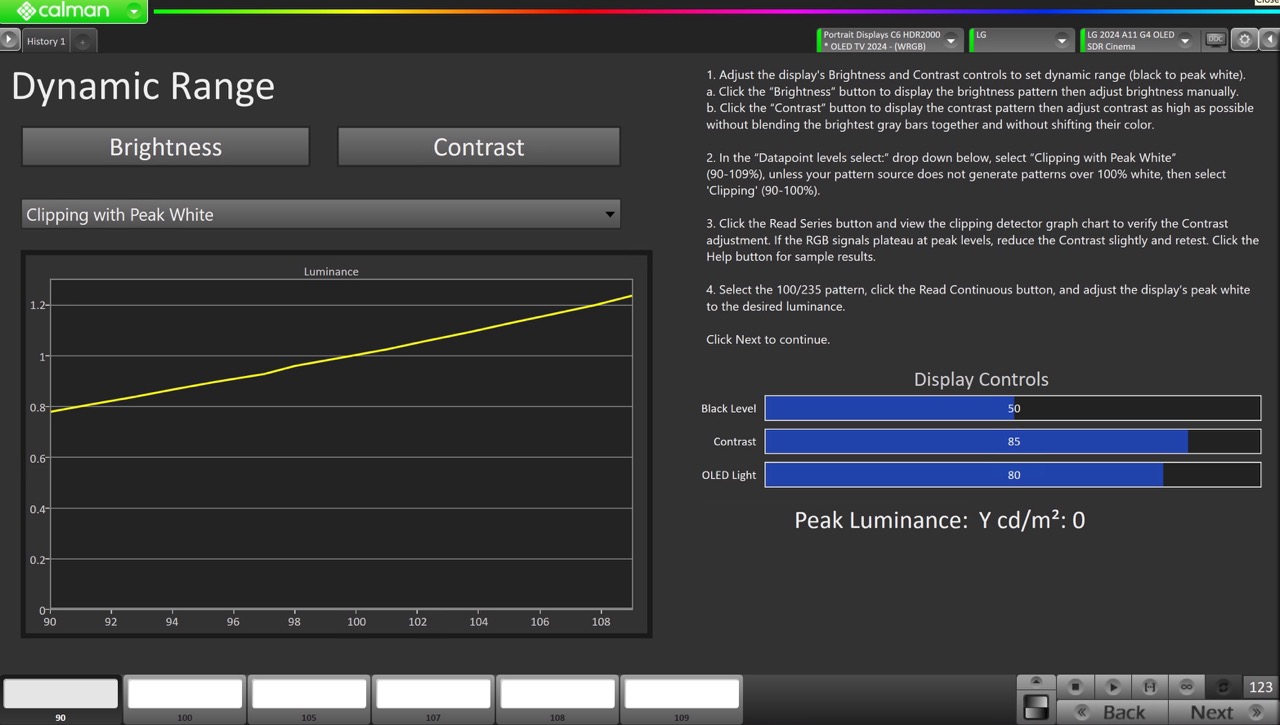
Note: This step is not present in HDR and Dolby Vision
-
- Adjust the display’s Brightness and Contrast controls to set dynamic range (black to peak white).
- In most cases, the default brightness and contrast values are appropriate for calibration
- Note: The Brightness and Contrast patterns are not support with the LG Internal Pattern Generator. Clicking them will not display a test pattern.
- Click the Brightness button to display the brightness pattern then adjust brightness manually.
- Click the Contrast button to display the contrast pattern then adjust contrast as high as possible without blending the brightest gray bars together and without shifting their color.
- In the Datapoint levels drop-down, select Clipping with Peak White (90-109%), unless your pattern source does not generate patterns over 100% white, then select Clipping (90-100%).
- Click the Read Series button and view the clipping detector graph chart to verify the Contrast adjustment.
- If the RGB signals plateau at peak levels, reduce the Contrast slightly and retest.
- Select the 100/235 pattern, click the Read Continuous button, and adjust the display’s peak white to the desired luminance from Step 6
Step 10

-
- Uncheck the Enable Calibration checkbox
- Proceed to the next page
Step 11
In this step, you’ll take readings of your display after the calibration. These will be used to compare your calibration results
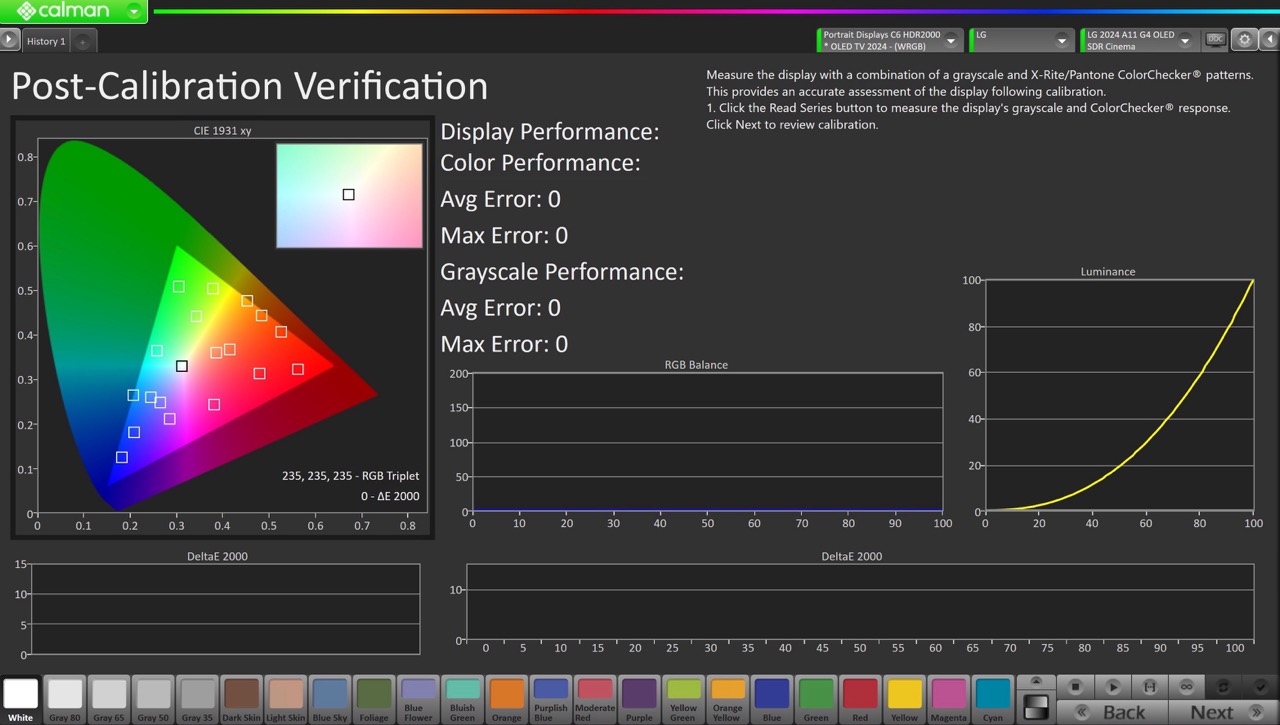
-
- Measure the display with a combination of a grayscale and X-Rite/Pantone ColorChecker patterns. This provides an accurate assessment of the display following calibration and will be represented along with the pre-calibration readings on the next page
- Click the Read Series […] button to measure the display’s grayscale and ColorChecker® response.
- Click Next to review calibration.
Step 12
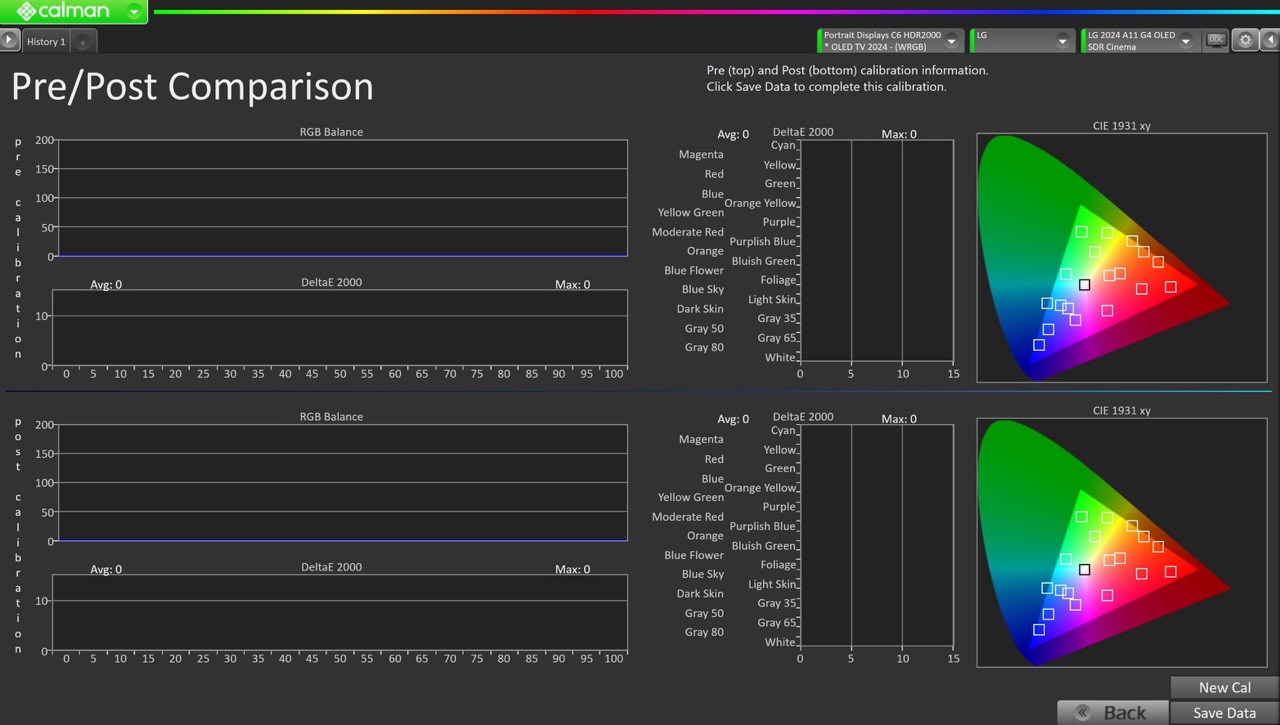
-
- Pre (top) and Post (bottom) calibration information will show the calibration results.
- Click New Cal to return to the introduction page, where you can choose to calibrate a new picture mode and/or colorspace
- Click Save Data to complete this calibration.